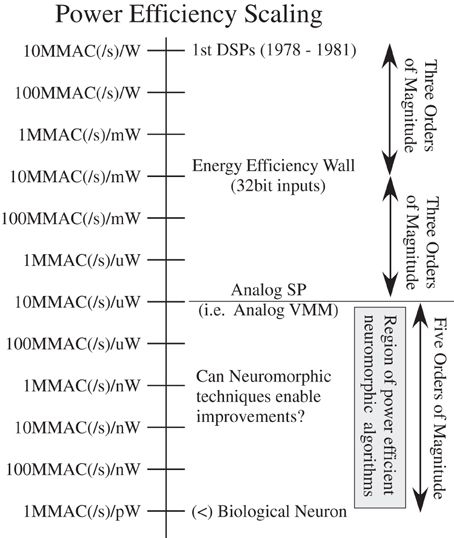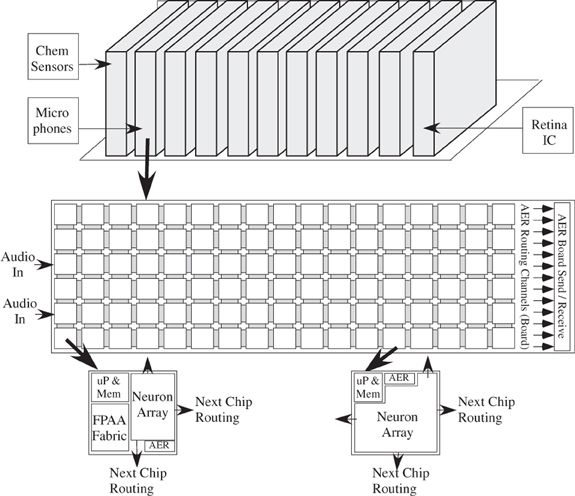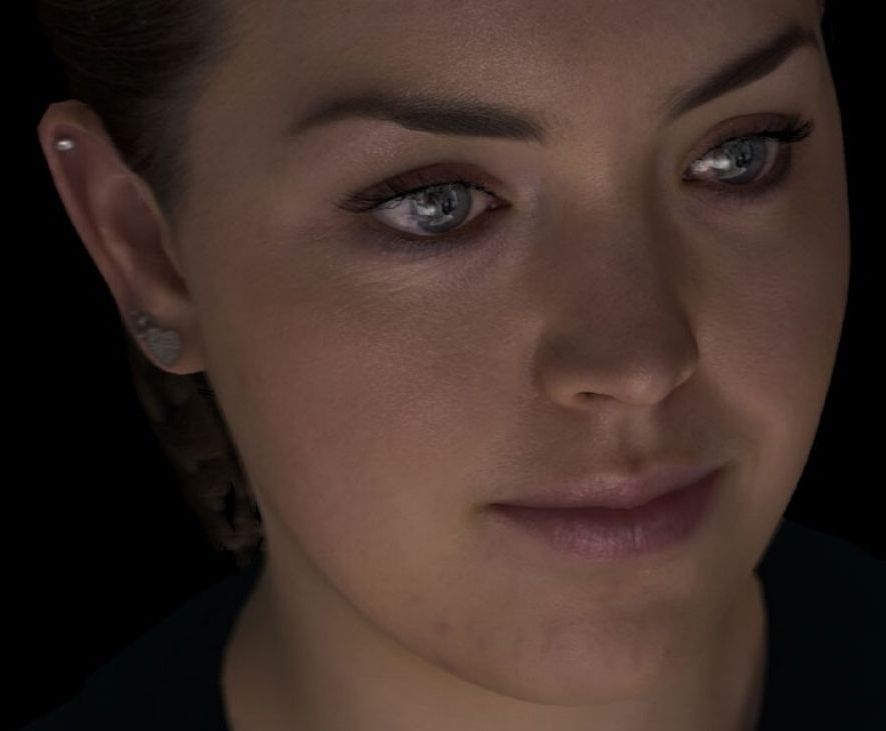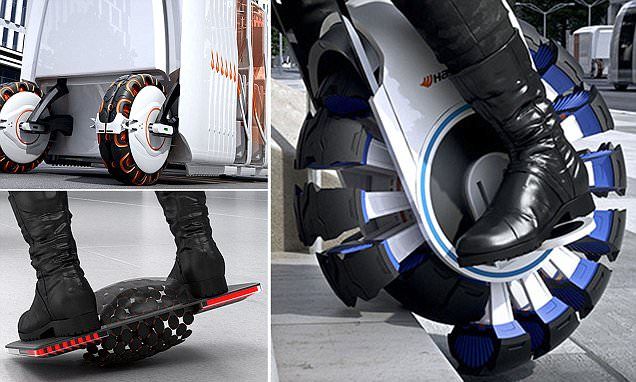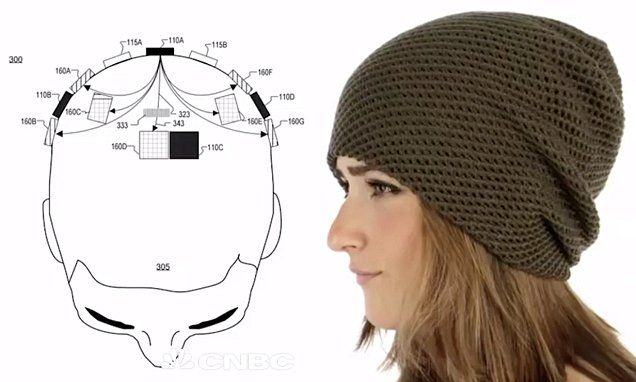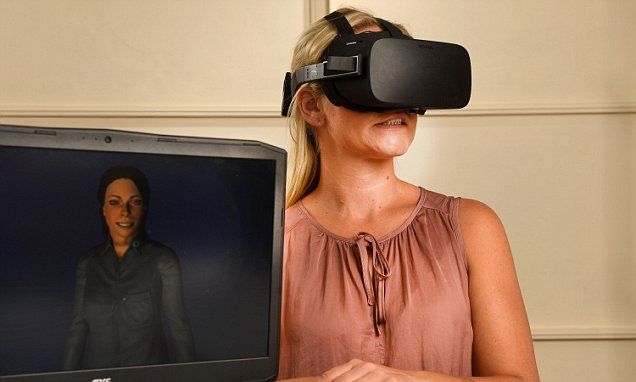It should be possible to build a silicon version of the human cerebral cortex with the transistor technology that was in production in 2013. The resulting machine would take up less than a cubic meter of space and consume less than 100 watts, not too far from the human brain. This article is summarizing the work of Jennifer Hasler and Bo Marr writing in Frontiers of Neuroscience – Finding a roadmap to achieve large neuromorphic hardware systems.
Computational power efficiency for biological systems is 8–9 orders of magnitude higher (better) than the power efficiency wall for digital computation. Analog techniques at a 10 nm node can potentially reach this same level of biological computational efficiency. Figure 1 show huge potential for neuromorphic systems, showing the community has a lot of room left for improvement, as well as potential directions on how to achieve these approaches with technology already being developed; new technologies only improve the probability of this potential being reached.
